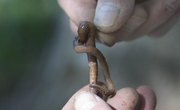
Striped bass is a popular game fish that spends most of its life offshore in the ocean. But mature adults of this species migrate every year into bodies of fresh or brackish water to spawn. During this time, anglers can fish for stripers in rivers and estuaries along most of the Atlantic coast, from the St. Lawrence River in the north to the St. Johns River in the south.
Time of Year
Striped bass begin to migrate into estuaries and lower river regions in late spring and continue to move into fresher waters as the season changes to summer. This is the optimum time to fish for stripers in rivers. A water temperature ranging from 60 to 65 degrees Fahrenheit is a good indicator that spawning is at its peak and fish are at their highest levels in rivers. Once summer is in full swing, these mature fish will move back into ocean waters.
Time of Day
While striped bass are active throughout the day, they prefer to feed during dawn or dusk hours. Fish during these times to improve your chances of catching a bass.
Locations
As striped bass move into rivers they stop at staging points along the way to rest. These locations are ideal for catching bass. Look for tapering points or humps that drop off into river channels. In shallower rivers, look for holes that are 10 to 15 feet deep. Rocky areas, such as the bottom of bluff banks or cliffs, can also hold stripers.
Schooling
Stripers prefer to move in large schools. If you catch a striped bass in a specific location in a river, the likelihood that there are more fish nearby is quite high. Continue to fish in this region, working a steady pattern of casts across the area where the first fish was caught.
Lures
Try crank baits, jerk baits or swim baits when fishing for migrating striped bass. Use mid-water suspending lures when fish are running deep, or try casting a top water lure if stripers are feeding on bait at the surface. Large jigs, tube lures and soft plastic baits, sometimes tipped with cut bait, can also entice striped bass to strike.
Natural Bait
Striped bass will take a variety of natural baits. Make your bait selection similar to what is natively found in the area where you are fishing. Smelt, herring, alewifes, eel and other fish commonly found in brackish waters in rivers where stripers spawn make good bait. Crabs, clams and sea worms also work well. To set up the natural bait rig for stripers, attach a pyramid weight to a swivel on the end of the main fishing line. Add a 2 or 3 foot leader and a baited hook with a bobber to keep the bait off the bottom of the river floor.
References
Writer Bio
In Jacksonville, Fla., Frank Whittemore is a content strategist with over a decade of experience as a hospital corpsman in the U.S. Navy and a licensed paramedic. He has over 15 years experience writing for several Fortune 500 companies. Whittemore writes on topics in medicine, nature, science, technology, the arts, cuisine, travel and sports.



